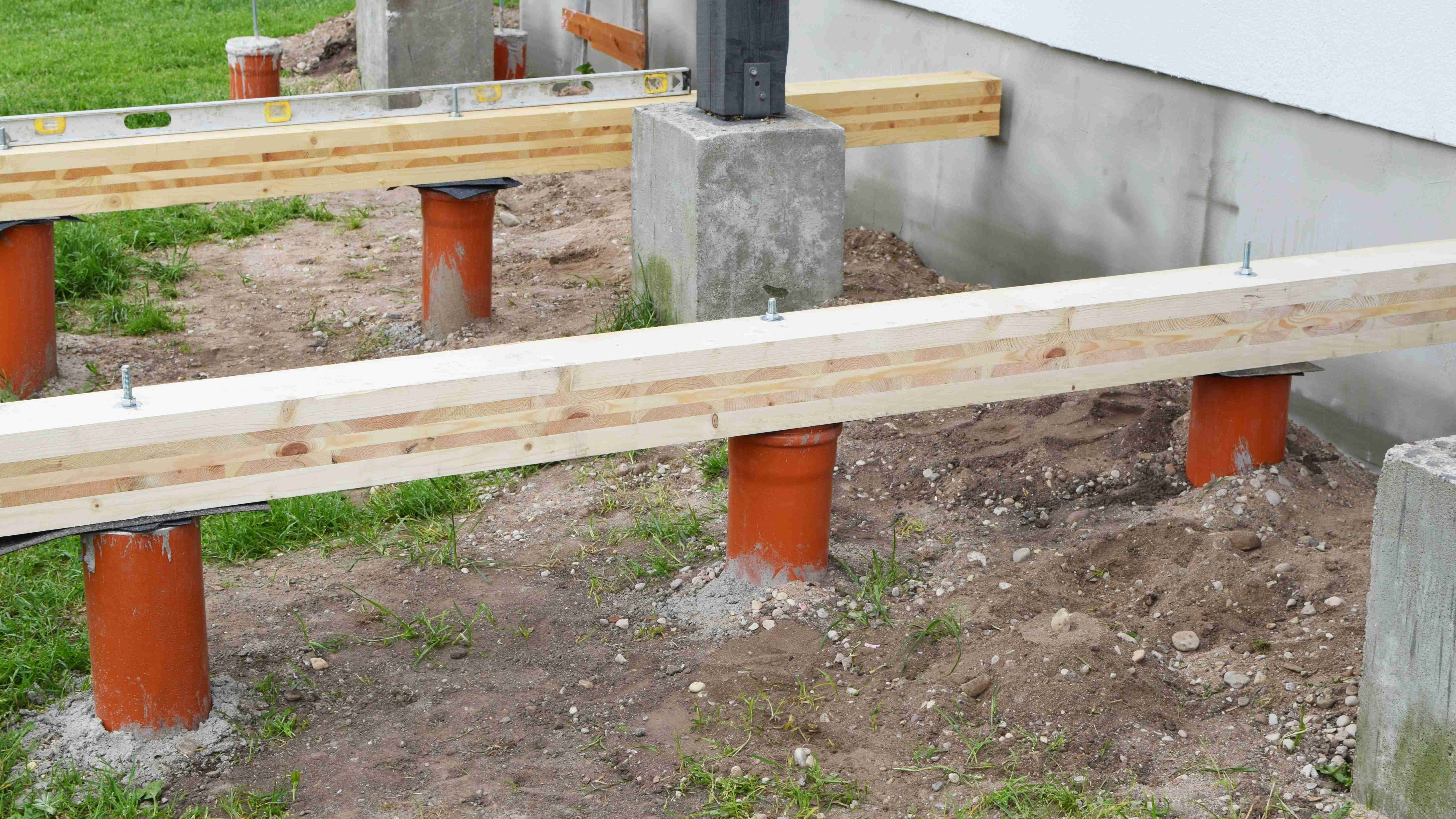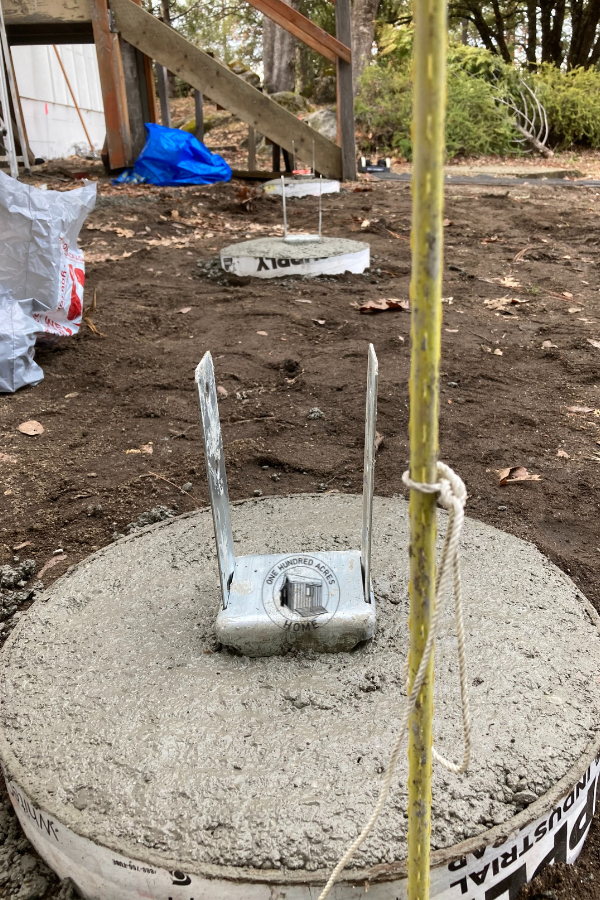Specialist Tips for Setting Up Deck Footings to Assistance Your Outdoor Space
When it concerns constructing a deck, among the most vital components to think about is the installment of correct footings. These footings are the foundation whereupon your exterior space will certainly relax, providing stability and assistance for many years to find. What exactly does it take to install deck grounds properly? In this conversation, we will discover experienced suggestions and techniques that can aid make sure a effective and resilient deck installment. From choosing the right sort of footings to preventing usual errors, we will certainly give you with the understanding and insights you need to confidently start your deck-building trip. Allow's dive right in and find the secret to a strong and durable outdoor space.
Relevance of Correct Deck Footings
Proper deck grounds are essential for making certain the stability and long life of your exterior area. Without solid and correctly set up grounds, your deck might end up being unpredictable, leading to safety and security threats and expensive repair work.

In addition to security, correct deck grounds also add to the durability of your outdoor area (Deck Footings). Footings that are developed and constructed to hold up against the elements and soil problems in your location will certainly assist protect against the deck from shifting or working out with time. By making sure the footings are appropriately sized and set up, you can lessen the risk of damages to the deck framework, prolonging its life expectancy and decreasing the requirement for expensive repair work or substitutes

Selecting the Right Sort Of Grounds
When picking the suitable sort of footings for your deck, it is essential to take into consideration elements such as soil problems, neighborhood building regulations, and the overall layout of your outside area. The sort of footing you select will play a crucial role in ensuring the security and long life of your deck.
One usual kind of ground is the concrete ground. Concrete footings appropriate for most dirt problems and provide excellent support for decks. They are usually mounted below the frost line to avoid shifting and working out as a result of cold and thawing cycles. Another alternative is helical piers, which are excellent for areas with unpredictable dirt or high water tables. These piers are screwed right into the ground and provide strong assistance for the deck.
In some instances, you may require to make use of customized footings, such as heap footings or deep foundations, if you are constructing a multi-level or huge deck. These grounds are developed to disperse the weight of the deck over a larger area, guaranteeing stability and preventing working out or sinking.
Prior to selecting a sort of footing, it is necessary to consult local building ordinance and guidelines to guarantee conformity. Furthermore, take into consideration the layout and meant use your outside room. Factors such as the dimension, form, and load-bearing needs of your deck will certainly affect the sort of footing that is most ideal.
Preparing the Ground for Footing Setup
To appropriately prepare the ground for footing installment, it is crucial to evaluate the dirt conditions and take required steps to ensure security and longevity of the deck. The first step is to excavate the area where the footings will be mounted.
When the location has been excavated, the next action is to compact the soil. This can be done utilizing a plate compactor or by utilizing a hand meddle. Condensing the soil assists to get rid of any kind of spaces or air pockets, which can bring about resolving and instability over time.
After compacting the soil, it is essential to lay a layer of crushed rock or crushed rock at the base of the excavation. This will click to read more supply water drainage and assistance to prevent water from pooling around the footings, which can cause disintegration and instability.
Step-by-Step Overview to Setting Up Deck Footings
After effectively preparing the ground for footing setup, the following action is to begin the process of setting up deck footings. This detailed guide will certainly provide you with a clear understanding of just how to mount deck footings for your exterior space.
Determine the location: Begin by marking the placements of the deck footings making use of risks and string. Make sure that the areas align with the design and design of your deck.
Dig the holes: Use a blog post hole miner or an auger to dig the holes for the footings. The depth and size of the openings need to be in accordance with neighborhood structure codes and the certain needs of your deck style.
Degree the holes: Utilize a degree to ensure that the openings are dug to the correct depth and are level with each various other. (Deck Footings)
Include gravel: Area a layer of gravel at the base of each opening to enhance drainage and protect against the timber from decaying.
Insert the grounds: Position the footings into the holes, making certain they are level and plumb. Use a level and a measuring tape to guarantee accuracy.
Protect the grounds: Put look at these guys concrete into the holes around the footings, filling them to the top. Make use of a blog post level to ensure the grounds remain level as the concrete collections.
Allow time for curing: Allow the concrete remedy according to the supplier's directions before proceeding with the deck building and construction.
Common Errors to Avoid During Footing Installment
One crucial facet to consider during the installation of deck grounds is preventing usual blunders that can compromise the stability and longevity of your exterior area. While deck footings might look like a simple and basic component of the construction procedure, ignoring particular elements can bring about pricey repair work and possible security dangers down the line.

Additionally, overlooking to mount appropriate drain measures can trigger water to accumulate around the footings, bring about rot, decay, and the eventual weakening of the deck's structure. Furthermore, utilizing the incorrect kind of footing product or stopping working to appropriately secure the footings can endanger their structural integrity.
To avoid these blunders, it is important additional resources to speak with a professional or follow industry guidelines to ensure proper ground installment. By doing so, you can make sure the security and durability of your outside area, providing a satisfying and secure setting for years ahead.
Final Thought
To conclude, mounting proper deck grounds is important for the stability and longevity of your outdoor room. By selecting the appropriate type of grounds and effectively preparing the ground, you can make certain a strong structure for your deck. Following a step-by-step guide and preventing usual errors during footing installation will certainly even more boost the toughness and security of your deck.
Correct deck footings are vital for guaranteeing the stability and long life of your outside space. The grounds serve as a link between the ground and the deck, permitting the weight of the deck and its residents to be distributed uniformly right into the soil.One usual type of ground is the concrete footing. Insert the footings: Place the footings right into the holes, making sure they are level and plumb. Secure the grounds: Pour concrete into the openings around the grounds, loading them to the top.